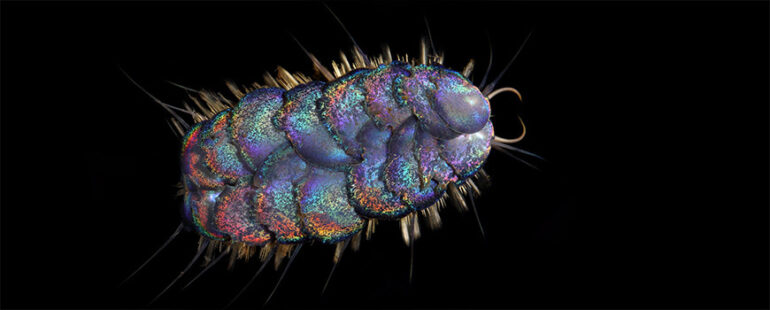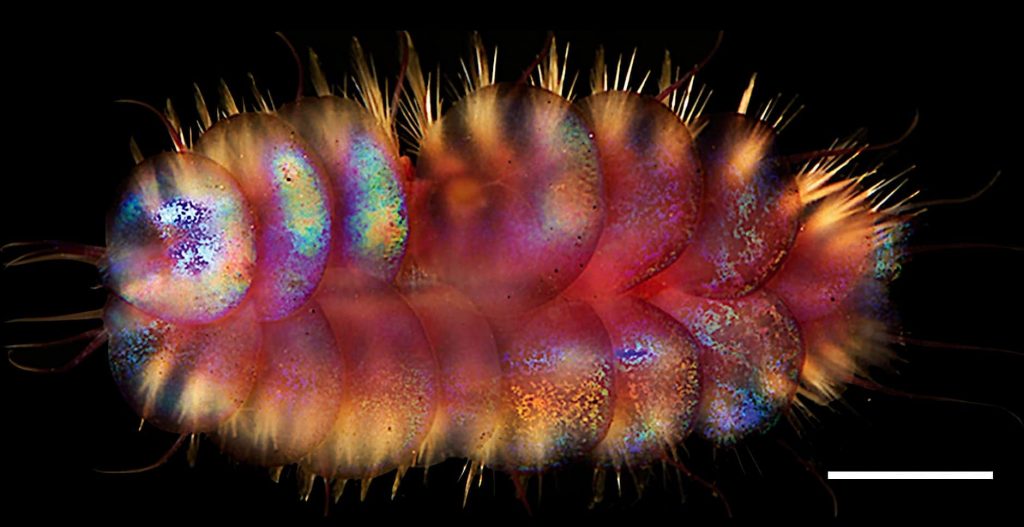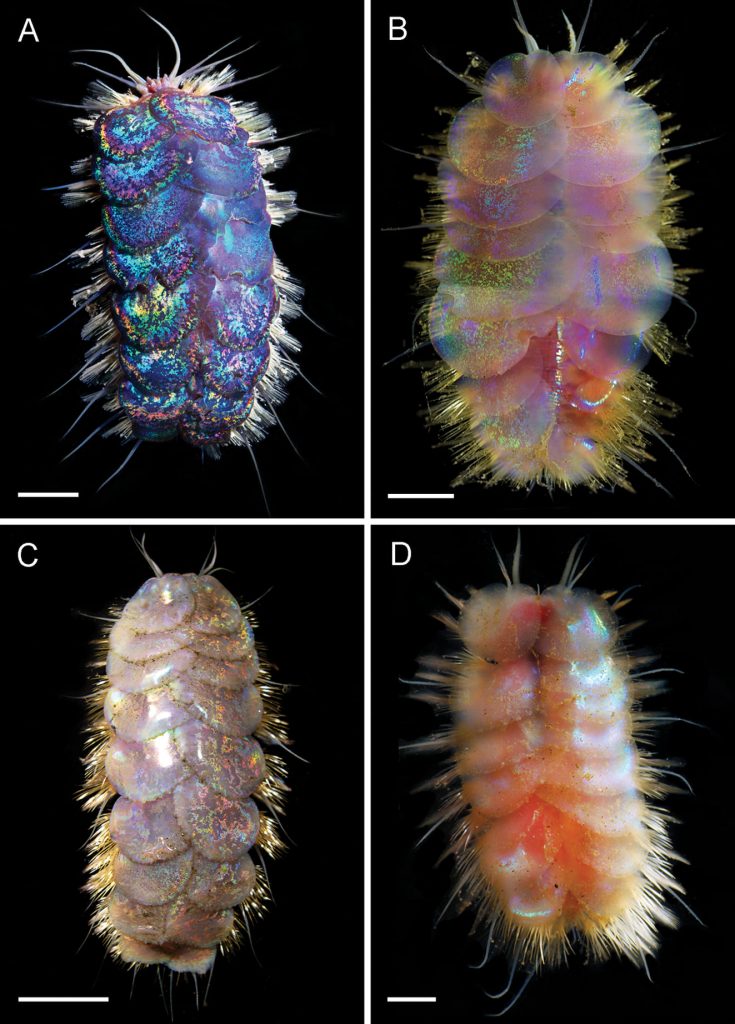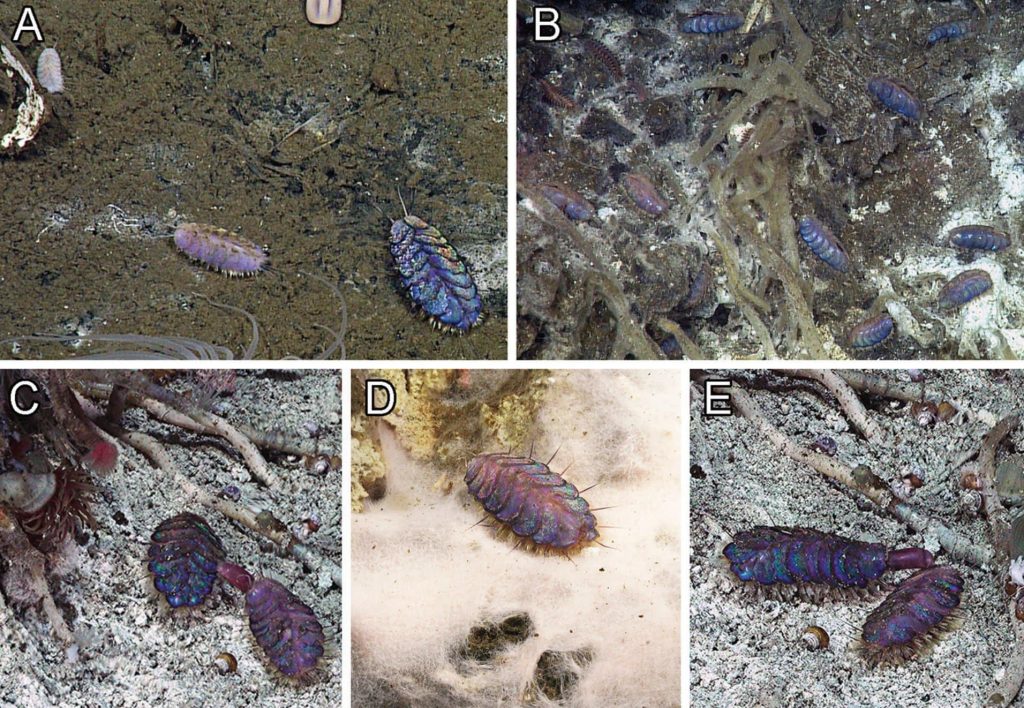Researchers from Scripps Institution of Oceanography at UC San Diego have described and named four new species of scale worms from deep-sea habitats in the eastern Pacific Ocean. These deep-sea worms are known for their iridescent overlapping scales and have had the nickname “Elvis worms” for many years.
Working on ships from the Monterey Bay Aquarium Research Institute, the Schmidt Ocean Institute, and the Woods Hole Oceanographic Institution, the researchers collected the worms along the eastern Pacific, including deep areas of the Monterey Canyon, the Gulf of Mexico, and Costa Rica. These new scale worms are all found in the deep sea, and have evolved to tolerate low oxygen levels by having elaborate gills under their scales.
They are typically found around whale falls and other organic remains, though one of the new species was found at a hydrothermal vent in the Gulf of California. The findings were published in the scientific journal ZooKeys May 12.
The largest group of scale worms is Polynoidae and the genus for the new species is Peinaleopolynoe. The first part of the genus name is from the Greek ???????o? (peinaleos), meaning hungry or famished, since the first species was found on an experimental food fall deployed in the deep Atlantic.
The worms were all observed alive and collected at depth via remotely operated vehicles and the submersible Alvin. Researchers recorded an interaction between members of one of the new species P. orphanae in their natural habitat.
“For several years, it was a mystery as to why the scales of P. orphanae specimens were often drastically damaged, and we reasoned that it may have occurred during the collection process,” said Avery Hatch, a PhD student at Scripps and lead author of the study. “Now that we have observed the entertaining in situ fighting behavior of P. orphanae, we understand that these animals are actually biting off chunks of one another’s scales.”
Hatch led the research that named and formally described the four new Peinaleopolynoe species, P. orphanae, P. mineoi, P. elvisi, and P. goffrediae. Peinaleopolynoemineoi was named after the father of Scripps Oceanography Board of Directors member Chrysa Mineo, in recognition of support from the Mineo family. P. elvisi was named after the King of Rock and Roll Elvis Presley, because the iridescent golden/pink scales are reminiscent of the sparkly sequined costumes he favored in his late career. The remaining two were named after scientists Victoria Orphan, an expert in geobiology and her wife Shana Goffredi, who specializes in animal/microbial symbiosis.
“Shana and Victoria are long-term collaborators and we are honored to be able to name two such spectacular new species for them in recognition of their great contributions to science,” said Greg Rouse, a Scripps marine biologist and Hatch’s mentor, who has named many new species of worms.
“There are so many beautiful, fascinating, and important deep-sea worms on this planet,” said Goffredi. “I feel so honored to have one as my namesake, especially one from Monterey Canyon, where I spent much of my career as a scientist.”
While these worms share many anatomical features, there were very subtle morphological differences among the new species. However, DNA sequencing and analyses clearly indicate they are distinctly different species.
“It is hard to believe that the deep sea is still largely unexplored and teeming with mysterious animals waiting to be discovered,” said Hatch. [Scripps]






